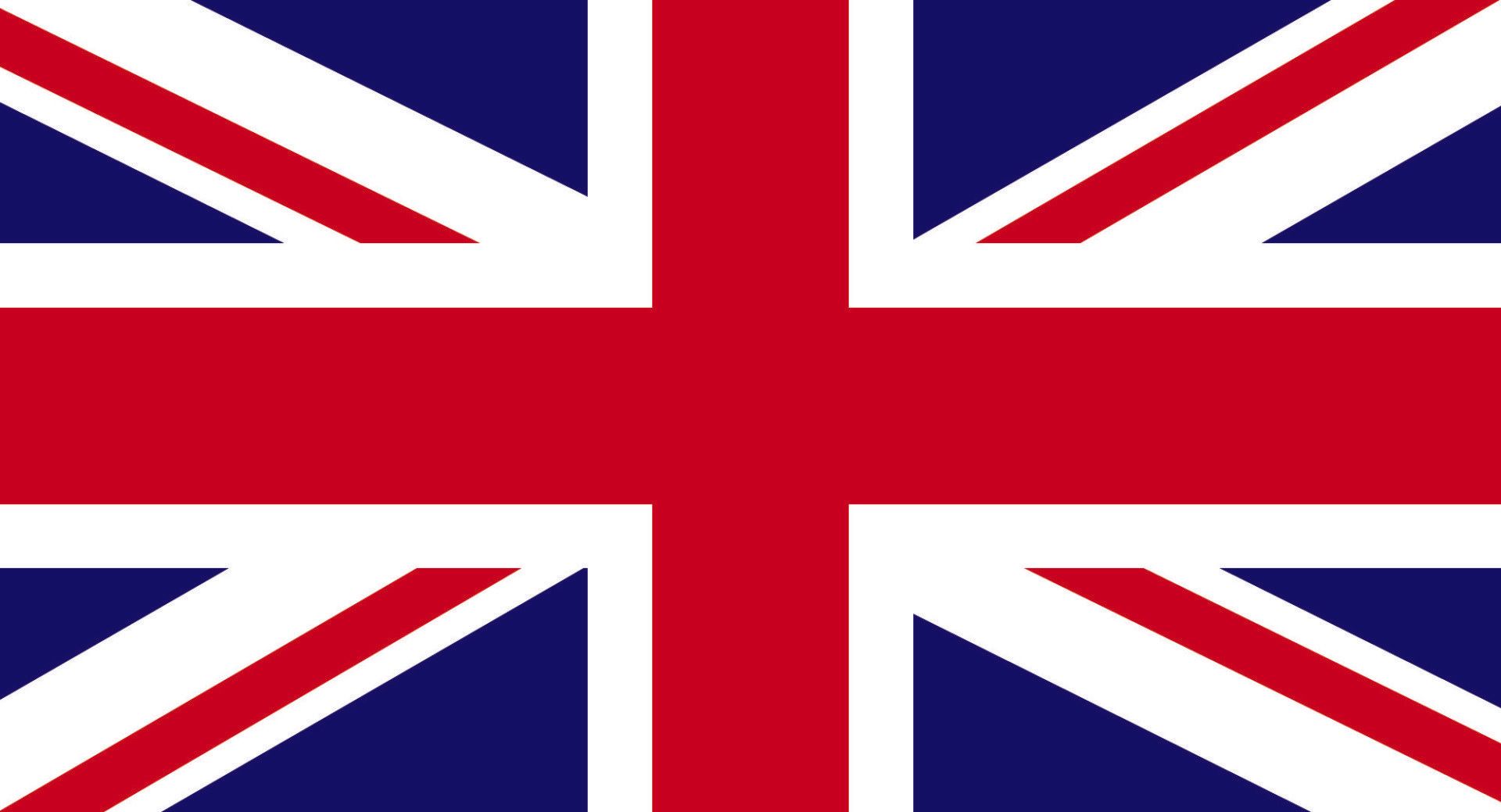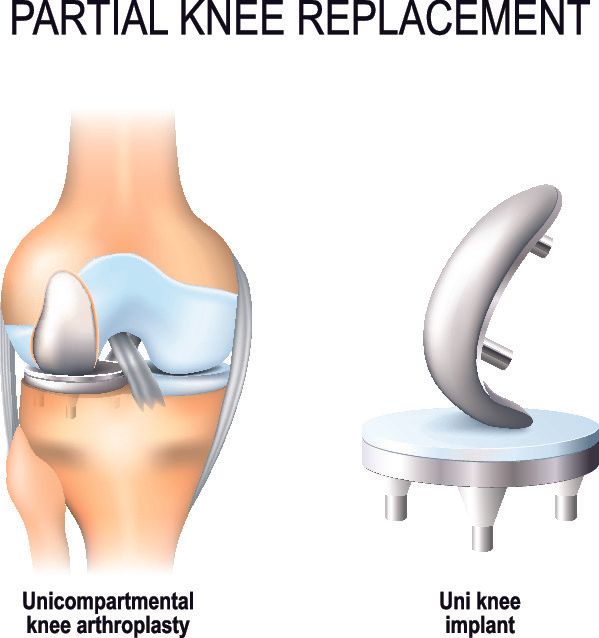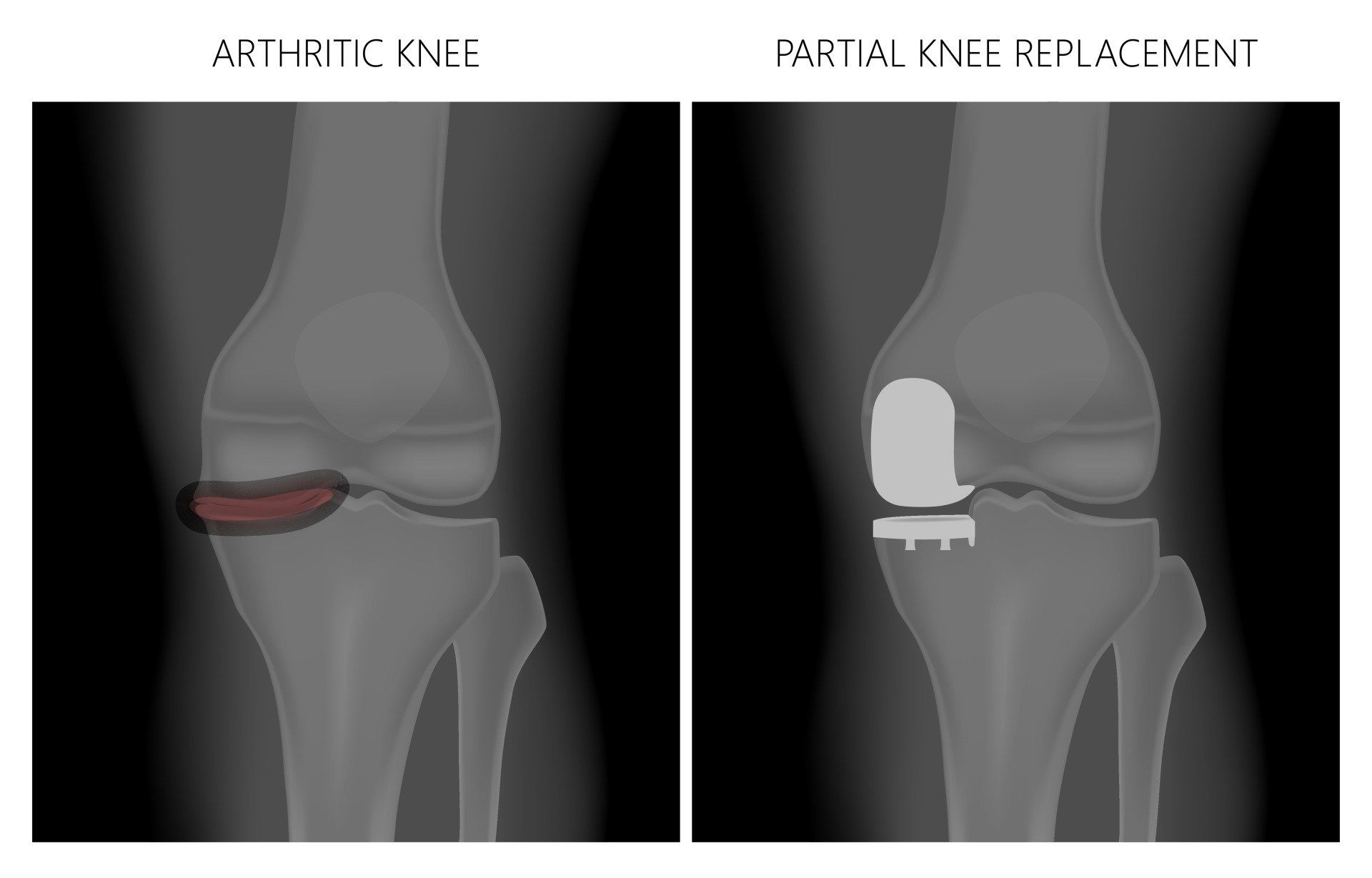Unicompartmental Knee Replacement (UKR)
What is a UKR?
- In cases where the arthritis is confined to one side of the knee then a unicompartmental (partial) knee replacement (arthroplasty) would be more suitable than a total knee replacement so as to preserve the unaffected parts of the knee
- It involves taking away the arthritic joint surfaces on one side of the knee:
- Medial UKR (inside half):
- most commonly performed UKR as 70% of the forces through the knee go through this compartment
- therefore the medial knee compartment subjected to greater forces, friction and wear
- Lateral UKR (outside half):
- Less commonly affected compartment so not performed as often
- Patients having this operation report better outcomes than patients having a medial UKR which still has excellent results
Indications: when is it suitable?
- Arthritis and symptoms are restricted to one side of the knee
Contraindications: when is it not suitable?
- Inflammatory arthritis
- Absence of ACL
- Ligament instability
- Contracted medial collateral ligament
- Marked angular deformity to leg
- Global knee pain
- Marked arthritis in other parts of the knee
Expectations
- Risks are very similar in nature to a total knee replacement but they are slightly less severe and frequent as the operation is smaller and there is less trauma to the bones and tissues of the knee
- Therefore rehabilitation is quicker and less painful
- More than 90% of UKRs are still functioning after 10 years
- However, they are revised at slightly higher rate than total knee replacements because:
- The arthritis may have spread to the other parts of the knee
- Patients are higher functioning and do more high impact activities than patients with a TKR so wear out their implants quicker
- They are easier to revise than a TKR
Advantages of a UKR vs TKR
- Knee movement feels more natural as no ligaments cut and rest of knee preserved
- Less disruption to tissues
- Smaller incision (size of wound)
- Less postoperative pain
- Less bone removed
- Less blood loss
- Less risk of infection, bleeding and wound problems
- Shorter stay in hospital
- Quicker recovery
- Easier, quicker, and fewer complications to revise in future
- Suitable for younger more physically active patients than for total knee replacements
Please see section on TKR
for risks and complications
and methods to minimise them.
Activities following UKR
- The goal of the UKR is to allow a higher level of function than a TKR
- However, to optimise the longevity of the implant below is a common sense approach to activities:
- Recommended (low impact):
- Walking
- Cycling
- Cross-trainer
- Rowing
- Swimming
- Water aerobics
- Dancing
- Sedentary occupations (desk based)
- Permitted (mild to moderate impact):
- Gentle doubles tennis
- Hiking
- Light labour (occupations
- Avoid (high impact):
- Jogging/running
- Contact sports
- Sports involving twisting/pivoting (basketball, competitive tennis, squash)
- Heavy labour (involving heavy lifting, routinely using ladders, kneeling a lot)






